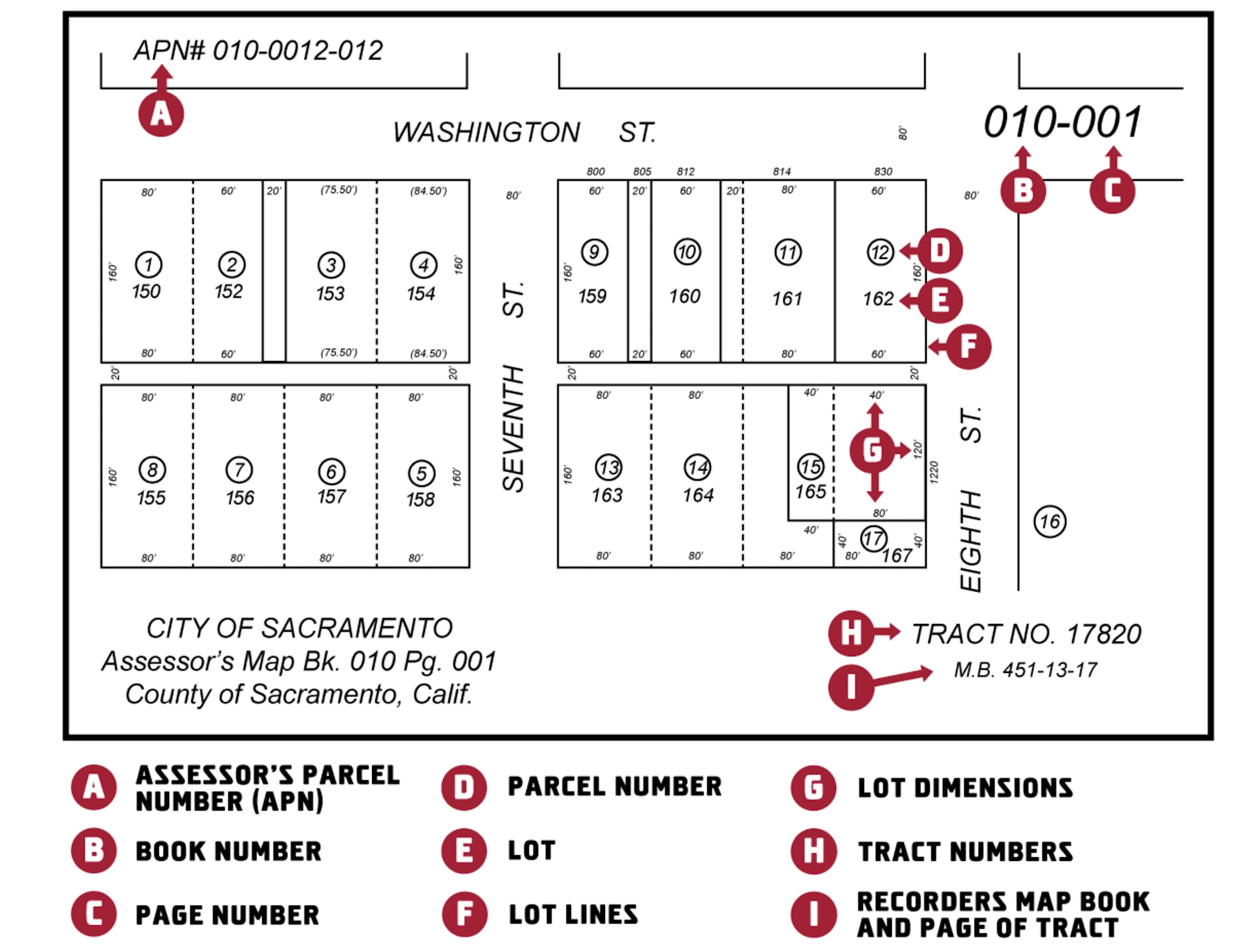How To find California parcel data.
Every parcel in the United States has a unique code assigned to it which is used by tax assessors as a kind of inventory number for tax purposes. These are most commonly referred to as Assessor Parcel Numbers, or APNs, but may also be known as Assessor’s Identification Numbers (AINs), Property Identification Numbers (PINs), Property Identification Numbers (PIDs), Property Account Numbers or Tax Account Numbers. Originally created for property tax purposes, the APN is also a common way to search for parcel data.
For Unincorporated communities, or areas outside a city in Los Angeles County:
Maps and geographic or spatial information is key to most of LA County Planning’s work. We used Geographic Information Systems (GIS) technology from its start, and still use it every day. We have created GIS web applications for viewing and researching land use and zoning. We also created GIS apps to look at subdivision activity, aerial imagery, and many other features for unincorporated communities, or areas outside a city in Los Angeles County. You can also use these GIS apps to create and save maps in PDF for printing.
Contact us at [email protected] for more information.
A Little Background on Assessor Parcel Numbers
Taxation has existed since the beginning of human civilization. Before money was invented, governments collected a percentage of the crops raised on a property. The earliest tax records ever discovered were records etched on clay tablets that date about 6,000 B.C. Since then, governing powers throughout history and around the world have had systems for keeping track of properties for taxation.
In the 11th century, tax assessors in England kept Domesday books to track how much someone owed and where they lived, which today are still referred to by some as ‘Doomsday books.’ The first known taxes in the United States were implemented by the Pilgrims in Plymouth, MA. A numbered map system was used by tax assessors in Boston in 1676, showing the boundaries of every property and its owner and listed its tax, value and assets. Corresponding records showed each taxpayer’s name, their land acreage and house values, the number of farm animals and their personal estate.
While assessor parcel numbers are still used to inventory property for tax purposes, their usefulness has evolved far beyond. Today APNs are used to connect parcels to their ownership history, sales data, lending history, fire, flood, and other natural hazard information, and information from just about every government and private entity influencing or influenced by, the property. We’ve come a long way from clay tablets. Today, digital, interactive APN maps are accessible on the interwebs at the click of a mouse. And ParcelQuest continues to innovate.
APN Number Lookup
In California, APNs are used to inventory or identify a property. While the specific length and format can vary from county to county, APNs generally look something like the example below and help identify a parcel’s location on an assessor’s plat map.
Ex: 006-0153-011-0000
Although individual plat maps (pages) are now digitized in most counties, they were once organized into groups (books) for filing purposes, hence the terms ‘book’ and ‘page.’ In the above example, the first three numbers in the series (006) are the map book which is the largest geographic unit within a county’s parcel numbering system. The next three numbers (015) refer to a specific map page within the map book. The seventh digit (3) represents a city block number found on that map page. (Note that not all pages have blocks. If this is the case, the block digit in an APN will be a zero.)
The next three digits (011) refer to the specific parcel on a block or on a page (if there is only one block on the page). Finally, the last four digits are all zero if the assessment represents a fee simple estate, or absolute ownership. Numbers other than zeroes are used if the rights have been divided for assessment purposes (for example condominiums, possessory interests, and tax segregations).
When searching for property information at ParcelQuest.com, there are several search options which make use of the APN. Whichever you choose to search by, we make finding what you need easier than Rickey Henderson stealing bases.
- Quick Search – Simply enter your APN to find your parcel of interest.
- Advanced Search – Search for a single APN or an entire list of APNs using the ‘Upload APN List’ feature. Save your list of APNs from Excel into a .csv file and upload it to the ParcelQuest search screen (we provide instructions if you need a little extra help with that). Click the ‘Search’ button, and every property from your list is automatically displayed on a map along with links to pages of ownership, history, tax data, and other helpful information. This can save you a ton of time when you need to conduct large searches for dozens, or even thousands, of properties. This is especially helpful if you need to quickly identify changes over time among the same large list of properties. It also allows you to run reports, do a mail merge, and print out mailing labels. You know, pretty much make life a whole lot easier on yourself.
- Radius & Sales Comps – As well as finding a subject property based on a real property address, you can find the property you’re looking for using its APN.
Documents – Need to find a recorded document but don’t know the number? Search for the associated property by APN, address, or owner names, and quickly locate the document you want on our Docs & Sales History tab. Or, quickly grab all the parcels on an assessor map using the APN search field and entering just the book and page digits of an APN (see the sample above).
Source: https://www.parcelquest.com/features/parcel-search/
Real estate agents are specialists, educators, and negotiators. They adjust to market changes and keep you informed. And keep in mind, every time you make a big decision in your life, especially a financial one, you need an expert on your side. You deserve an expert advisor to guide you through the process and protect your interests.
Expert advice from a trusted professional is priceless. Let’s connect today.
Alena Lehrer
Compass, Beverly Hills
DRE 02120134
m: 310.437.3700
[email protected]
AlenaLehrer.com





